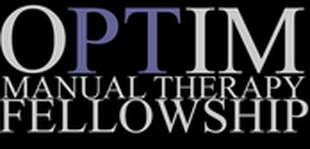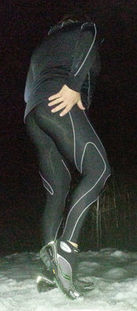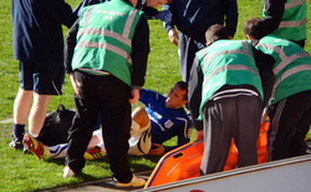- Home
- About Us
- TSPT Academy
- Online Courses
-
Resources
- Newsletter
- Business Minded Sports Physio Podcast
- Day in the Life of a Sports PT
- Residency Corner
-
Special Tests
>
-
Cervical Spine
>
- Alar Ligament Test
- Bakody's Sign
- Cervical Distraction Test
- Cervical Rotation Lateral Flexion Test
- Craniocervical Flexion Test (CCFT)
- Deep Neck Flexor Endurance Test
- Posterior-Anterior Segmental Mobility
- Segmental Mobility
- Sharp-Purser Test
- Spurling's Maneuver
- Transverse Ligament Test
- ULNT - Median
- ULNT - Radial
- ULNT - Ulnar
- Vertebral Artery Test
- Thoracic Spine >
-
Lumbar Spine/Sacroiliac Joint
>
- Active Sit-Up Test
- Alternate Gillet Test
- Crossed Straight Leg Raise Test
- Extensor Endurance Test
- FABER Test
- Fortin's Sign
- Gaenslen Test
- Gillet Test
- Gower's Sign
- Lumbar Quadrant Test
- POSH Test
- Posteroanterior Mobility
- Prone Knee Bend Test
- Prone Instability Test
- Resisted Abduction Test
- Sacral Clearing Test
- Seated Forward Flexion Test
- SIJ Compression/Distraction Test
- Slump Test
- Sphinx Test
- Spine Rotators & Multifidus Test
- Squish Test
- Standing Forward Flexion Test
- Straight Leg Raise Test
- Supine to Long Sit Test
-
Shoulder
>
- Active Compression Test
- Anterior Apprehension
- Biceps Load Test II
- Drop Arm Sign
- External Rotation Lag Sign
- Hawkins-Kennedy Impingement Sign
- Horizontal Adduction Test
- Internal Rotation Lag Sign
- Jobe Test
- Ludington's Test
- Neer Test
- Painful Arc Sign
- Pronated Load Test
- Resisted Supination External Rotation Test
- Speed's Test
- Posterior Apprehension
- Sulcus Sign
- Thoracic Outlet Tests >
- Yergason's Test
- Elbow >
- Wrist/Hand >
- Hip >
- Knee >
- Foot/Ankle >
-
Cervical Spine
>
- I want Financial Freedom
- I want Professional Growth
- I want Clinical Mastery
|
I've written before about the potential need to address "muscle strains" with a neural perspective. Earlier this week one of my co-workers was doing a single-leg squat when he immediately felt intense and sharp upper inner thigh and upper posterior thigh pain. As a result, he displayed a significant antalgic gait pattern. I was busy that day, so I didn't get to look at him, but I, of course, suspected the potential spinal contribution. The next day my co-worker came to me and told me when he tried doing a lunge the previous day his pain switched sides! If that doesn't tell you to look at the spine, I don't know what should. While he was feeling and walking a little better, my co-worker asked me to take a look at him at lunch. Objective Multisegmental Flexion: Slightly Dysfunctional Nonpainful Multisegmental Extension: Significantly Dysfunctional Nonpainful Multisegmental Rotation: Dysfunctional Nonpainful bilat Deep Squat: Dysfunctional Painful Sideglides in Standing: No significant asymmetry noted HS Flexibility: WNL Mild loss of hip flexion mobility bilaterally with reports of "tightness" in posterior hip Hip IR/ER ROM: WNL At this point, the most significant findings are the loss of lumbar extension and hip flexion. While I could have tried tensioning either the obturator or sciatic nerves, I was pretty certain the pain would respond to lumbar treatment. I had my co-worker perform a deep squat as his asterisk sign. My co-worker then performed 20 repetitions of prone press-ups with manual overpressure to the lumbar spine, followed by a reassessment of the deep squat. He reported a significant reduction in pain. Following an additional 20 repetitions, he had no pain with a deep squat and it became functional. I reassessed his lumbar extension and hip flexion mobility and some limitation remained. At that point, I did a lumbar manipulation bilaterally and hip distraction manipulation bilaterally to help normalize his lumbar and hip motion. His HEP was repeated press-ups and hip flexion. There are a couple take-away points from this one. Always always always check spine. With "weird" symptoms, like switching sides, something neural is likely suspected, even if there is no lumbar pain. Also, in all our patients coming in with "muscle strains," perhaps we should be checking for neural components and trying to treat the spine as well. Both muscles strains and neural tension can present with a sharp and acute pain, so we must be sure to differentiate and treat appropriately. -Chris
Like this post? Then check out the Insider Access Page for advanced content! And check out similar posts below!
2 Comments
Steve G
1/26/2016 03:20:50 pm
Nice work!
Reply
Chad
1/27/2016 01:08:52 pm
Great point about neurodynamics! I always find it very exciting and interesting when patient's respond to lumbar treatment & their distal symptoms either reduce or are abolished.
Reply
Leave a Reply. |
Dr. Brian Schwabe's NEW Book in partner with PaleoHacks!
Learn residency-level content on our
Insider Access pages We value quality PT education & CEU's. Click the MedBridge logo below for TSPT savings!Archives
July 2019
Categories
All
|










 RSS Feed
RSS Feed